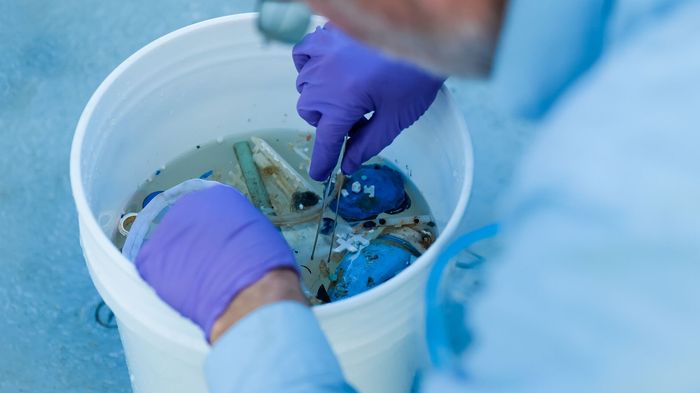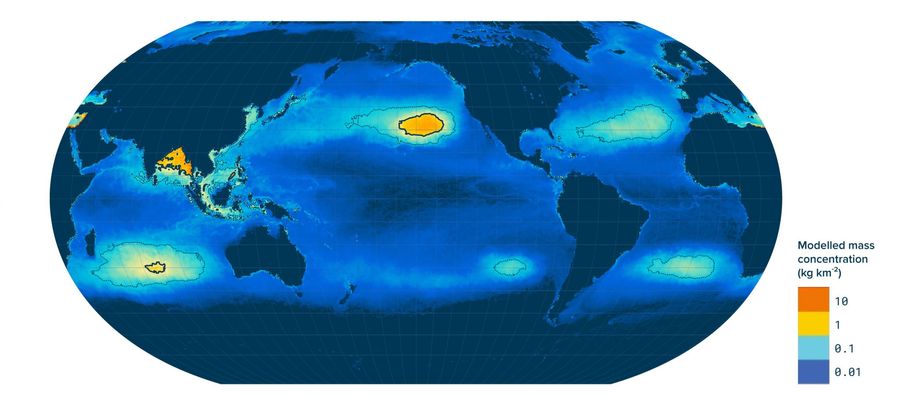
North Atlantic Microplastic Concentrations May Exceed Safe Levels for Marine Life Without Intervention
Back to updates-
Our latest research suggests levels of microplastic pollution in the North Atlantic water column may soon exceed safe limits for marine organisms, especially in areas of high plastic concentration.
-
The study describes relative abundance of plastic and plankton in water column of the eastern North Atlantic, providing baseline to evaluate exposure of marine organisms to plastic pollution and the distribution of plastic within the ocean water column.
-
Removal of floating ocean plastic prevents formation of secondary microplastics, increasing chances of keeping future microplastic pollution within safe concentrations for marine organisms.
Protecting marine life is at the core of our work at The Ocean Cleanup and is a key driver in our mission to rid the world’s oceans of plastic. This research in the North Atlantic focused on interactions between microplastics and pelagic life; that is, organisms living in the ocean water column. The results indicate that without cleanup or removal of this floating plastic, microplastic levels will soon exceed safe levels for pelagic life.
The presence of microplastics in the ocean water column indicates that marine organism exposure to plastic pollution at a range of water depths is inevitable. However, the magnitude of the pollution and associated ecological risks are still poorly understood. To close this knowledge gap, our scientists teamed up with researchers from the Royal Netherlands Institute for Sea Research. Together they embarked on a research expedition to the North Atlantic subtropical gyre, also known as the North Atlantic Garbage Patch, in late 2020.
The expedition revealed new insights into the vertical distribution of plastic and plankton in the upper 300m of the North Atlantic Ocean. As expected from our previous research, concentrations of plastic were highest at the ocean surface, with concentration decreasing rapidly in the upper few meters of the water column. Consequently, the ratios between plastic and plankton were typically highest in the surface waters. Secondly, our scientists found that plankton in the water column of the North Atlantic Garbage Patch are generally more exposed to plastic pollution than plankton in more coastal pelagic ecosystems.
Another important finding from this research is that small microplastics — those smaller than 100 microns (μm), equivalent to 0.1mm — can be up to ten million times more abundant than larger microplastics (over 500 μm) in the water column of the North Atlantic Ocean. This means that concentrations of small microplastics are now approaching the limits of what is estimated to be safe concentrations for pelagic species. This is a very concerning development and could have significant adverse consequences on the marine life in this part of the North Atlantic.
The good news, however, is that in terms of mass the concentrations of small microplastics are likely equal or less than those of larger microplastics. In other words, while small microplastics are much more abundant in the ocean, the majority of plastic mass throughout the ocean is still contained within larger particles, which are mostly concentrated at the ocean surface. This is advantageous for cleanup operations ; while still a challenging endeavor, it is far easier and more economical to remove plastic from the surface of the ocean than plastic which is submerged beneath the waves.
Earlier research by The Ocean Cleanup has shown that plastic afloat in ocean garbage patches breaks down into small microplastics that sink down to the deep sea below. Removal of floating plastic debris circulating in offshore accumulation zones — such as ocean garbage patches — will therefore reduce the number of microplastics sinking into deeper waters and minimize the threat to marine life. Through further research and cleanup, it will thus still be possible to mitigate levels of small microplastics and keep them within the predicted safe limits for pelagic life. However, the need for real action is growing increasingly urgent, and the window of opportunity is closing quickly.






